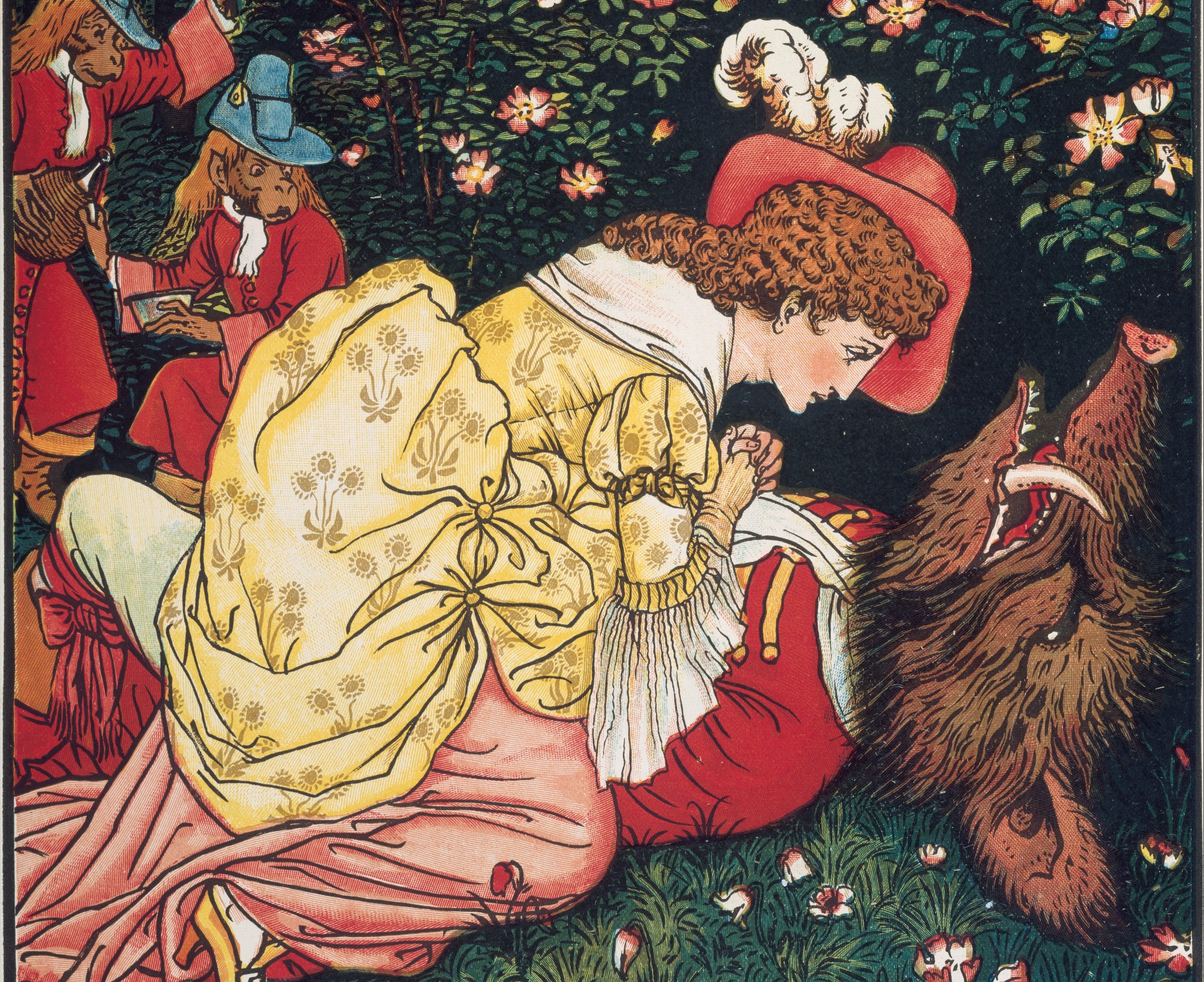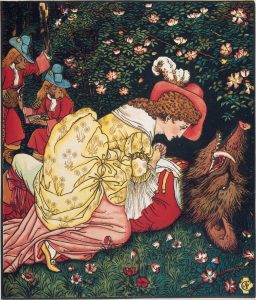
Local Arts Event Review: Beauty and the Beast
Sadie Wyant
 On Saturday, March 5 2016, I had the pleasure of attending a production of Beauty and the Beast at Clemson Little Theatre in Pendleton. The production was put on by the Clemson Area Youth Theatre and showed from March 3 through the 6.The play was written by Vera Morris and directed by Latoya Young, with student director Rebecca Griebno. There were two acts with a fifteen minute intermission between them. The cast was made up of twenty youth, ranging from about twelve years old to high school seniors.
On Saturday, March 5 2016, I had the pleasure of attending a production of Beauty and the Beast at Clemson Little Theatre in Pendleton. The production was put on by the Clemson Area Youth Theatre and showed from March 3 through the 6.The play was written by Vera Morris and directed by Latoya Young, with student director Rebecca Griebno. There were two acts with a fifteen minute intermission between them. The cast was made up of twenty youth, ranging from about twelve years old to high school seniors.
For being such a varied group of students, the cast performed fairly well, and the play was cohesive. One actress that I found to be lacking was the girl who played the part of the old woman who brings about the curse of the Beast. She was not expressive and was quite monotonous, which did not give much feeling to the scenes in which she was supposed to show extreme emotions. Despite this, the production ran smoothly, with no distinguishable mistakes.
One thing I found interesting was how different the play was from the Disney rendition of Beauty and the Beast. The differences I noticed between the play and the movie prompted me to read the original story, La Belle et la Bête, which was revised from its longer version by Jeanne-Marie LePrince Beaumont in 1756. Each of the three mediums for this story offer various themes, some of which cross over and some of which do not. For example, while the play and movie explain in the beginning how the Beast became cursed, the story does not. All three renditions involve a girl who sacrifices herself for someone else, though each story has a different background for why the girl chooses to go to the Beast’s castle.
In the original story, a merchant who has lost his fortune is traveling home to his six children (three sons and three daughters) when he finds himself lost in a forest. After being chased by wolves, he stumbles upon a castle. Going inside, he finds food and a fire open for him. He goes about his business cautiously, thanking the unknown master of the castle who has provided him with hospitality. The next morning he finds a garden of roses, takes a branch for his youngest daughter Beauty, and is surprised by a Beast. The Beast yells at the man, saying that the man is ungrateful for the hospitality shown to him. He then condemns the man to death for stealing the roses, which he claims to value above all. The man pleads for a chance to see his children once again, and at the mention of daughters the Beast allows the man to go. He gives him a command, however, that he must send one of his daughters in his place or return in three months’ time to face his death. The Beast seems to contradict his wrath afterward by giving the man a chest to fill with treasure for his family. When the man goes home to his children, his youngest daughter Beauty—a beautiful, good-natured girl—vows to take her father’s place and go to the Beast.
The play rendition of the Beauty and the Beast story has a similar plot-line for the girl’s sacrifice, though some of the characters are different. In the play, a widow named Madame Rondeau, whose husband has lost the family fortune along with his life, is coming back home after realizing all that had taken place. She has three daughters, two of whom are married. Each of her children and their husbands had asked the woman to bring back something when she went to retrieve their fortune. Marguerite is married to a man named Graspo, and they had asked the woman to bring them back a ruby ring and a saddle for racing horses. The second daughter, Isabel, is married to a man named Greedo, and they had asked for perfume and a nice suit. The youngest daughter, Beauty, had asked for a rose.
The woman ends up lost in a forest, dejected about the loss of her husband and all their money. She is chased by a talking wolf after losing her horse and cart, and then finds the Beast’s castle. She enters and the servants hesitantly allow her to stay. The Beast himself confronts her, but finally says that she can stay the night. The woman is then tricked by a little girl named Rose Legend, who convinces the woman to pick a rose out of a vase. The Beast reacts in almost the exact same way as the Beast from the original story rendition, condemning the woman to death. She asks to see her children again, and he allows her to return for a day, but she must either send a daughter in her place or come back to die. Much like the story, Beauty offers to sacrifice herself and goes to the Beast’s castle, using the special rhyme that the Beast had taught her mother. While spinning in a circle, the rhyme had to be chanted, “Bellhorses, Bellhorses, what time of day? One o’clock, two o’clock, three…and away.”
In the movie, a man named Maurice is seen as a crazy inventor. He makes inventions that the rest of the town think will not work. His daughter, Belle, which means “beauty” in French, constantly has her head in the clouds and her nose in a book. The townspeople also see her as foolish. However, a buff cocky man named Gaston has his sights set on Belle, so when her father goes to a fair to enter his latest contraption, Gaston starts to formulate a plan. While Maurice is on his journey, he gets lost in the forest and chased by wolves to the gate of a castle. He enters, finding servants that have been transformed into enchanted objects like a candelabra and a clock. They allow him to stay, but when the Beast finds out, he puts Maurice in his dungeon. Maurice’s horse finds its way home and Belle asks the horse to take her back to where her father became lost. She finds the castle and her father, but the Beast threatens her as well. She offers herself in exchange for her father, and the Beast sends him home in an enchanted cart. The only reference to a rose in this rendition is a rose that the enchantress who had cursed the Beast gave to him. This rose would be symbolic of his time as a Beast: when the rose had withered and the last petal fallen, he and his servants would remain in their enchanted state unless he had found someone to love him for who he truly was.
Each of these three renditions of the Beauty and the Beast story offer their own morals. The original story’s moral comes at the end. Beauty is rewarded by a fairy, who says that she is to be rewarded because she preferred virtue before wit or beauty. The moral of the play comes through the Beast’s transformation from a selfish prince to a caring man as well as Beauty’s willingness to love him. The moral of the movie is that sometimes love can come through things other than physical beauty. Gaston, though he was the handsome, well-liked man of the town, was egotistical and mean in Belle’s eyes. However, the Beast, though unattractive and short-tempered, won over Belle’s heart because she saw the potential he had in him. These morals obviously tailor to different audiences: Disney is generally tailored for younger audiences, while the play and the original story could offer lessons to audiences both young and old.
Overall, I liked the play rendition of a story I had previously only known through Disney. It was really interesting to see how the renditions of the original French story were similar as well as different. It made me wonder why the play had a widow meet the Beast while the other two renditions had a man meet the Beast first. I also wondered at the names given to the characters in the play, especially those in Madame Rondeau’s family. Are the husbands of the two oldest daughters given such odd names to reinforce the shallowness of their characters? Greedo and Graspo are not exactly French names, but they do give a sense of greed and a desire to take things that is a prominent theme in each of the two characters.
In all, Beauty and the Beast was a good show put on by talented youth actors, and I enjoyed it. The stage was used to the full, with set decorations covering every inch to give the impression that one is in a castle, with the forest on one side and the Rondeau’s farmhouse on the other. Even though the set was one continuous construction, the actors did not break the spell by crossing through imaginary walls; instead, actors went off stage on one side and entered another location through the other side. I thought that the play had been directed well and each actor was loud enough to be heard from close to the back of the small auditorium, even without the aid of a microphone.
I would definitely recommend this play to others, even though show times have ended. If the play is put on again, even by another theatre, I would like to see how it changes with a different cast and potentially a different director.